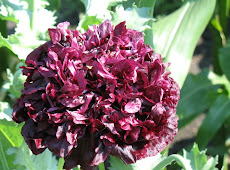Whether you’re a novice gardener or an experienced one, the most important thing to remember about beans is that the soil to be warm: 18-24 degrees Celsius or 64 to 75 degrees Fahrenheit. Beans of all types, bush or climbing, need these temperatures to germinate
The second most important thing is this: once germinated, beans are one of the easiest most productive vegetables to grow.
The third thing, is do not touch the bean leaves when they are wet. They tend to get a disease on their foliage when you do.
And I’d bet Jack a dozen seeds, that your garden grown beans will be the best you’ve ever tasted! Positively melt-in-your-mouth yummy, in fact.
So here goes. You have worked your garden soil, likely transplanted some tomatoes, popped in some onion sets, maybe even put in some potatoes (more on these later), and the soil is now the right temperature for beans.
Bush beans, some times called snap beans, will give you maximum product from few plants. You can plant them in a block, like the Square Foot Gardener suggests, or in rows. Depending on the yearly layout of my garden, I have done both.
I do find it easier to pick them when I plant them in rows, but they tend to topple over more easily, so if I plant in rows, I also place inexpensive (cheap!) wire fences around them for support. Normally, bush beans don’t need support, but my garden soil is high in nitrogen, so the plants get taller than they should.
Sow seed 1 inch deep and 2 inches apart. Some books recommend that rows be 18 inches apart, but because I have really good soil, I put mine approximately 10 inches apart. If you are new to gardening, play it safe and follow the instructions on the seed package. If you have limited space, cheat a little, and put the rows closer together.
Bush beans come in three colours: green, yellow and purple. Yes, purple. These are often called Royal Burgundy and though they look lovely fresh, once cooked they turn green. One advantage of Royal Burgundy is that it just keeps on producing. It’s the energizer bunny of beans.
If you are a cold climate gardener like I am, try a green variety called Labrador. They have better cold soil tolerance than other bush beans. They also produce well for a fairly long period and taste great fresh or frozen.
Another green bean worth a try is a fillet type. I use Straight ‘N Narrow. It is highly productive, absolutely fabulous (Ab Fab) fresh, is good for preserving either frozen or as pickles.
Yellow bush bean varieties I have consistent success with are Roc d’Or and Indy Gold. Occasionally, I have so many, I sell them, and people have said they’ve never tasted such good beans before.
I grew yellow fillet beans last year, but these were not terribly successful, so no recommendations for those as yet.
There are other bush bean varieties available, and you will find the most tried-and-true varieties in seed display racks and in seed catalogues. Use some of these, but don’t be afraid to experiment with a new variety since you don’t need many seeds to begin with.
Subscribe to:
Post Comments (Atom)


No comments:
Post a Comment